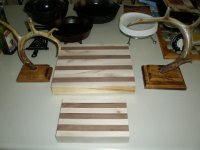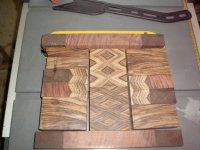Kevin E
That is definitely end grain and a beautiful board. For what its worth every real butcher shop "butcher block table" I have ever seen has the end grain for a working surface. I'm sure they had a reason for that.
At the same breath I will say that before you posted that picture, I do not recollect ever seeing a home cutting board that had the end grain working surface.
Jack
That is definitely end grain and a beautiful board. For what its worth every real butcher shop "butcher block table" I have ever seen has the end grain for a working surface. I'm sure they had a reason for that.
At the same breath I will say that before you posted that picture, I do not recollect ever seeing a home cutting board that had the end grain working surface.
Jack







